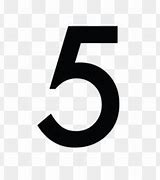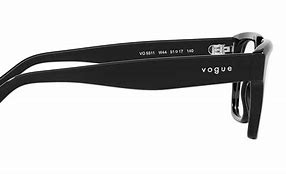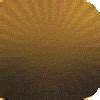
Fashion, society and culture
The public exposure of the male and female midriff and bare navel was considered taboo at times in the past in Western cultures, being considered immodest or indecent. Female navel exposure was banned in some jurisdictions, but community perceptions have changed to this now being acceptable.[20] The crop top is a shirt that often exposes the belly button and has become more common among young people.[21] Exposure of the male navel has rarely been stigmatised and has become particularly popular in recent years, due to the strong resurgence of the male crop top and male navel piercing.[22] The navel and midriff are often also displayed in bikinis, or when low-rise pants are worn.
While the West was relatively resistant to navel-baring clothing until the 1980s, it has long been a fashion with Indian women,[23] often displayed with saris or lehengas.
The Japanese have long had a special regard for the navel. During the early Jōmon period in northern Japan, three small balls indicating the breasts and navel were pasted onto flat clay objects to represent the female body. The navel was exaggerated in size, informed by the belief that the navel symbolized the center where life began.[24]
In Arabic-Levantine culture, belly dancing is a popular art form that consists of dance movements focused on the torso and navel.[25]
Buddhism and Hinduism refer to the chakra of the navel as the manipura. In qigong, the navel is seen as the main energy centre, or dantian. In Hinduism, the Kundalini energy is sometimes described as being located at the navel.
En el marc del Pla de llengües de la Universitat de Barcelona, el Vicerectorat d’Estudiants i de Política Lingüísitca, i el Comissionat per a multilingüisme, per mitjà dels Serveis Lingüístics, ofereix als membres de la Universitat de Barcelona el programa Rosetta Stone, un mètode d’autoaprenentatge de llengües per Internet amb el qual es pot practicar i millorar totes les destreses lingüístiques.
Rosetta Stone permet l’aprenentatge de 23 llengües: anglès americà, anglès britànic, alemany, francès, italià, espanyol, àrab, coreà, grec, filipí (tagàlog), hebreu, hindi, irlandès, japonès, llatí, neerlandès, persa, polonès, portuguès (Brasil), rus, suec, turc, vietnamita i xinès en els nivells inicials A1 i A2 del Marc europeu comú de referència per a les llengües (MECR). Pel que fa l’anglès, el francès, l’alemany, l’italià, l’espanyol, el rus i el xinès, els nivells d’aprenentatge arriben fins al B1 del MECR, un dels objectius dels programes d’acompanyament lingüístic del Pla de llengües.
Rosetta Stone es va oferir gratuïtament durant un any (març de 2011- març de 2012). Durant aquest temps, més de 1.500 estudiants i gairebé 200 membres del PAS i PDI van tenir l’oportunitat d’aprendre una, o més, de les 23 llengües que ofereix el programa. En total, es van comptabilitzar gairebé 25.000 hores d’estudi, fet que mostra el bon aprofitament del programa i la necessitat de formació multilingüe per part dels membres de la Universitat de Barcelona.
La situació econòmica no ens va possibilitar tornar a oferir aquest programa gratuïtament, però es van poder negociar uns preus molt avantatjosos per als membres de la UB, fet que va permetre seguir mantenint l’oferta de cursos Rosetta Stone un any més (abril de 2012 – abril de 2013). Durant aquest període s’han adquirit gairebé 900 llicències del programa.
Ara iniciem un nou període (maig de 2013 – maig de 2014), amb la novetat que oferim una nova modalitat, Rosetta Stone TOTALe, que amplia l’oferta d’activitats d’aprenentatge en línia. Esperem arribar a cobrir les necessitats de tothom.
Buah Jeruk Sunkist Navel merupakan jeruk pilihan kualitas terbaik. Warna kulit Orange dan pulir jeruk warna orange juga. Mengandung vitamin C tinggi dan bisa konsumsi langsung ataupun untuk jus. Buah Jeruk Sunkist Navel mengandung: Serat, Zat Besi, Potasium, Kalsium, Thiamin Vitamin C Manfaat Buah Jeruk Sunkist Navel: Menjaga kesehatan jantung Meningkatkan sistem kekebalan tubuh Melancarkan pencernaan Mengatasi batu ginjal Mencegah anemia
Definisi Terperinci: Navel merujuk kepada pusat perut seseorang di mana tali pusat terhubung semasa dalam kandungan. Dalam istilah perubatan, ia dikenali sebagai umbilicus. Navel juga dapat merujuk kepada titik pusat pada sesuatu, misalnya, “navel of the universe” untuk menggambarkan pusat kosmos atau punca segala sesuatu.
Etimologi: Perkataan “navel” berasal dari bahasa Inggeris Kuno “nafela,” yang berasal daripada bahasa Jermanik purba *nabelaz, yang berkait dengan bahasa Latin “umbilicus” dan Yunani “omphalos.”
Sebutkan: Navel diucapkan sebagai /ˈneɪ.vəl/.
The doctor examined the patient’s navel for any signs of infection. Doktor memeriksa pusat pesakit untuk sebarang tanda jangkitan.
She has a small tattoo just above her navel. Dia mempunyai tatu kecil tepat di atas pusatnya.
The baby’s navel will heal within a few weeks after birth. Pusat bayi akan sembuh dalam beberapa minggu selepas kelahiran.
He pointed to his navel to illustrate the location of his pain. Dia menunjuk ke arah pusatnya untuk menggambarkan lokasi kesakitannya.
The fashion model wore a crop top that exposed her navel. Model fesyen itu memakai kemeja crop yang mendedahkan pusatnya.
Dari Wikikamus bahasa Indonesia, kamus bebas
jeruk navel merupakan jeruk unik yang memiliki 3 skat atau kamar di dalamnya.jenis jeruk initersebut di budidayakan terutama di daerah brasil,california,arizona dan florida.dan jeruk ini merupakan buah yang kaya dengan vitamin c.
Your shopping cart is empty!
Katon Bagaskara, Lomba Sihir & KLa Project
GIỚI THIỆU ĐÁ CAO CẤP HOÀNG GIA
Hiện tại Hoàng Gia Phát:
✅ Có hệ thống kho xưởng khắp các tỉnh và Thành phố, máy móc, cơ sở vật chất hiện đại.
✅ Là Đại lý nhập khẩu các dòng đá Brazin, Ấn Độ, Tây Ban Nha, Trung Quốc,.... được đối tác nước ngoài tin tưởng.
✅ Được các thương hiệu trong nước lựa chọn: Caslaquartz, Vinaquartz, Vicostone,....
✅ Chúng tôi chuyên cung cấp - thi công hoàn thiện các hạng mục: Đá bàn bếp, Đá Lavabo, Đá cầu thang bộ, Đá cầu thang máy, Đá bậc cấp, Mặt tiền, Tranh đá, Lò sưởi,....
✅ Thực hiện hàng loạt các dự án và ngày càng được nhiều đối tác tin tưởng.
Clinical significance
Outies are sometimes mistaken for umbilical hernias; however, they are a completely different shape with no health concern, unlike an umbilical hernia. The navel (specifically abdominal wall) would be considered an umbilical hernia if the protrusion were 5 centimeters or more. The diameter of an umbilical hernia is usually 1/2-inch or more.[9] Navels that are concave are nicknamed "innies".[10] While the shape of the human navel may be affected by long term changes to diet and exercise, unexpected change in shape may be the result of ascites.[11]
In addition to change in shape being a possible side effect from ascites and umbilical hernias, the navel can be involved in umbilical sinus or fistula, which in rare cases can lead to menstrual or fecal discharge from the navel. Menstrual discharge from the umbilicus is a rare disorder associated with umbilical endometriosis.[12][13]
To minimize scarring, the navel is a recommended site of incision for various surgeries, including transgastric appendicectomy,[16] gall bladder surgery,[17] and the umbilicoplasty[18] procedure itself.
All placental mammals have a navel, although it is generally more conspicuous in humans.[19]
Scarred area on the abdomen after detachment of the umbilical cord
The navel (clinically known as the umbilicus; pl.: umbilici or umbilicuses; commonly known as the belly button or tummy button) is a protruding, flat, or hollowed area on the abdomen at the attachment site of the umbilical cord.[1]
The umbilicus is used to visually separate the abdomen into quadrants.[2]
The umbilicus is a prominent scar on the abdomen, with its position being relatively consistent among humans. The skin around the waist at the level of the umbilicus is supplied by the tenth thoracic spinal nerve (T10 dermatome). The umbilicus itself typically lies at a vertical level corresponding to the junction between the L3 and L4 vertebrae,[3] with a normal variation among people between the L3 and L5 vertebrae.[4]
Parts of the adult navel include the "umbilical cord remnant" or "umbilical tip", which is the often protruding scar left by the detachment of the umbilical cord. This is located in the center of the navel, sometimes described as the belly button. Around the cord remnant is the "umbilical collar", formed by the dense fibrous umbilical ring. Surrounding the umbilical collar is the periumbilical skin. Directly behind the navel is a thick fibrous cord formed from the umbilical cord, called the urachus, which originates from the bladder.[5]
The belly button is unique to each individual due to it being a scar, and various general forms have been classified by medical practitioners.[6][7][further explanation needed]























